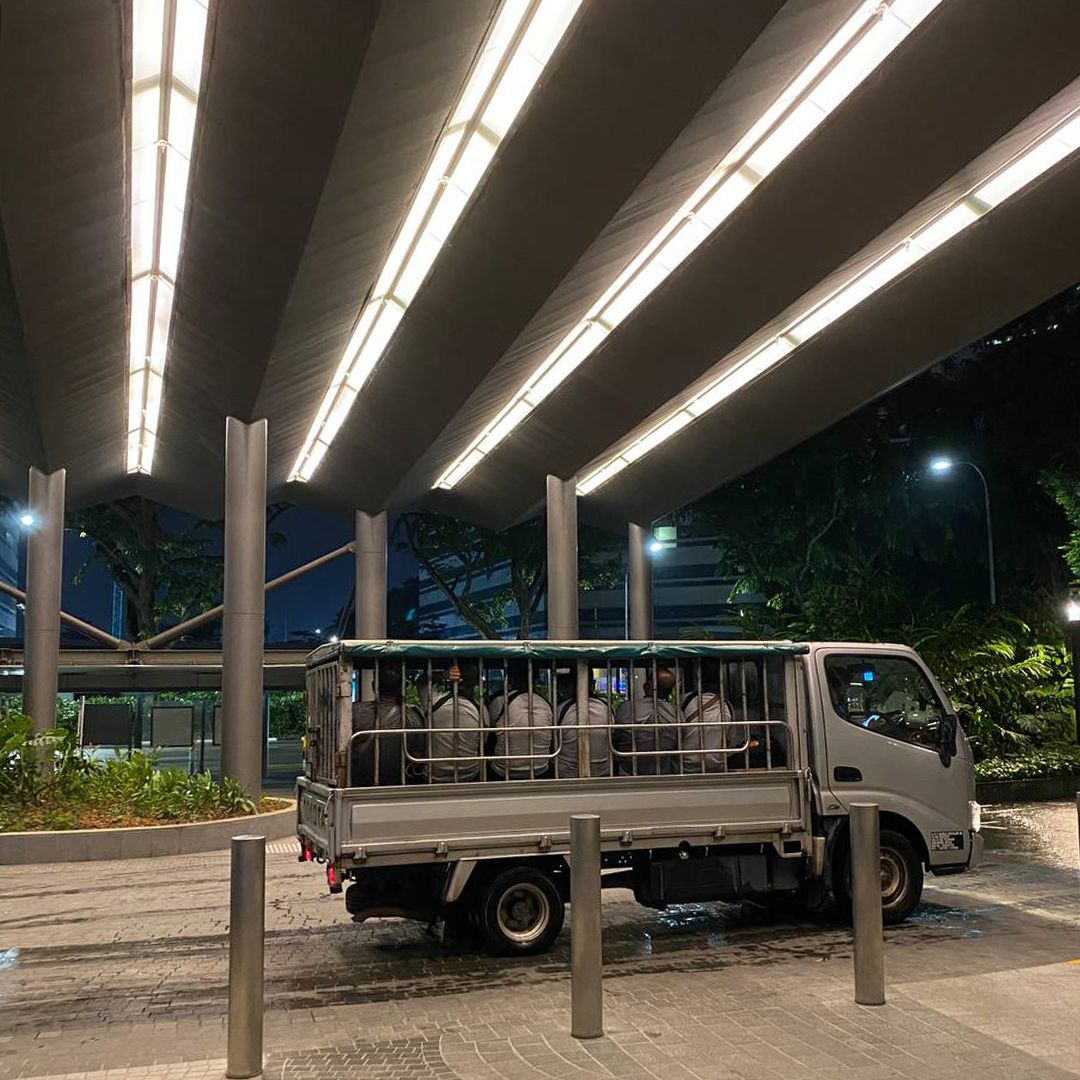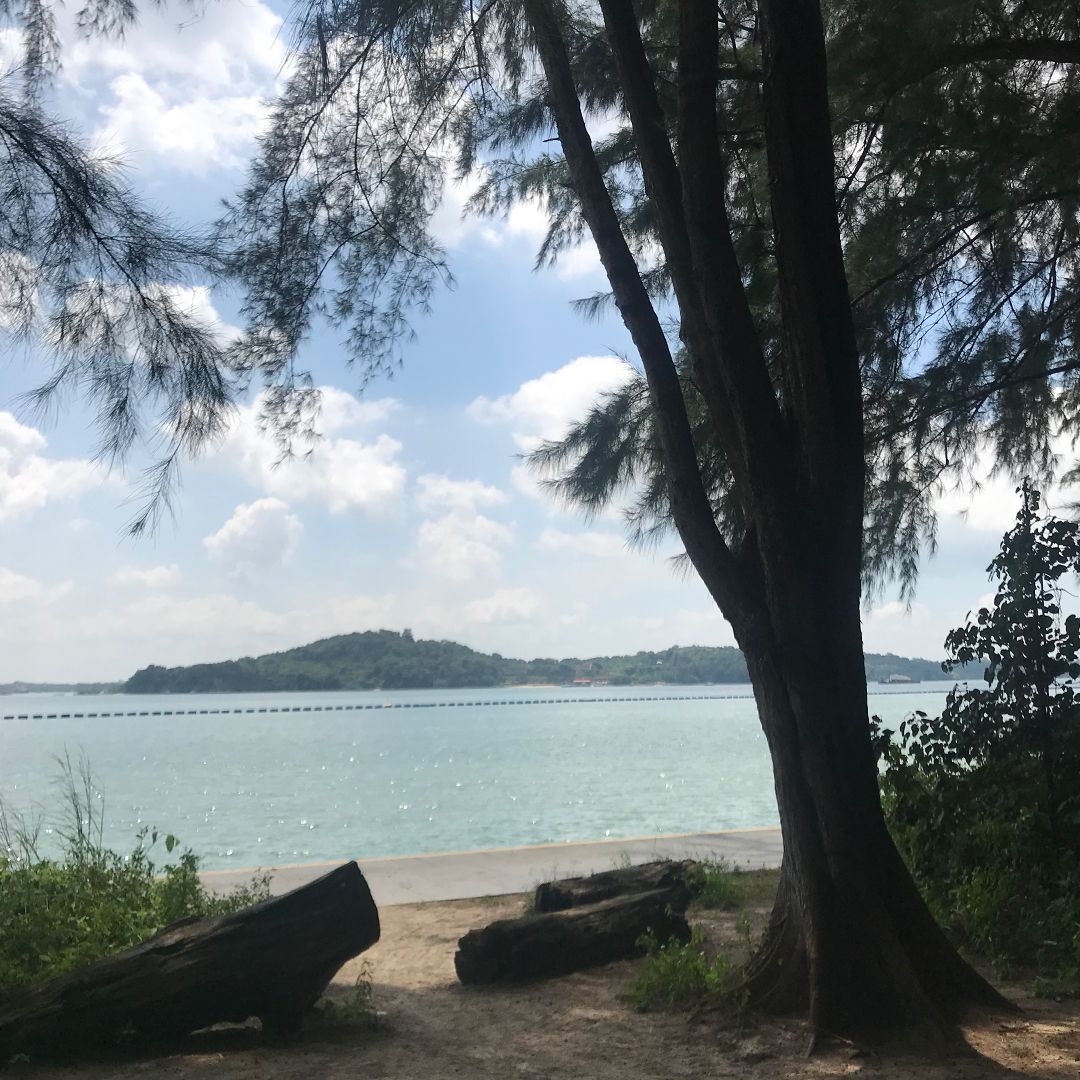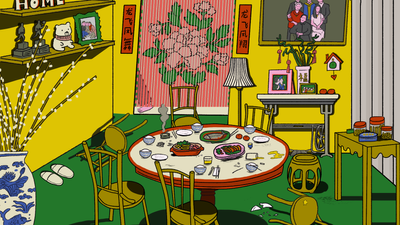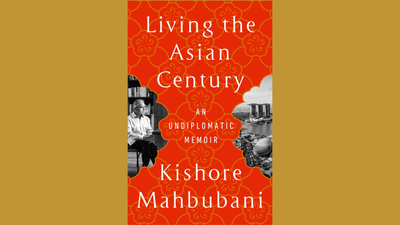On my first visit to Coney Island, I cycled along woodsy paths, before coming to a slow halt at a clearing. The Casuarina trees parted, and the ocean came into view. I got off my bike, and walked off sand and onto… concrete. There, replete with yellow lines, was a grey, concrete staircase leading into the sea.
This image has remained in my mind ever since. Even on the furthest edges of the country, there is the presence of an overarching system of morality. Or is it authority?
The same grey and yellow of this staircase is found on much of the pavement in the Central Business District, or on any Mass Rapid Transit station platform. If one were to trace the trajectory of global logistics, and broaden one’s imagination for just a bit, it is plausible that sand found across these sites came from the same nameless South-east Asian village. Coney Island, then, is perhaps more similar to another cog in the wheel of Singapore Inc. than any vision of nature.
I recall the rolodex of images of itself that Singapore Inc. has pushed out to the world in recent memory: Crazy Rich Asians and Westworld in popular culture, and Gardens by the Bay and Jewel in architecture, to name a few. The sheen of each image, fortified by glass and metal, whizzes past my mind. In every vision, Singapore is always performing, always outdoing itself.
These images don’t come at the drop of a hat. Every vision is a result of careful calculation and an endless number of meetings and paperwork, GeBiz applications and inter-departmental e-mails CC-ed into oblivion. Some people’s entire careers revolve around the production of these aforementioned images. In 2017, when the Singapore Tourism Board campaign, “Passion Made Possible”, was unveiled, Singapore’s brand was described as “a passionate, never-settling spirit of determination and enterprise that constantly pursues possibilities and reinvention.” How befittingly exhausting! Official narratives have prided themselves on this relentless optimisation. But it is at this juncture that I ask, for whom, and to what end?
And for all the gloss, consider the gaze: Singapore has an estimated 90,000 police cameras installed, and aims to double this by 2030. As of 2019, it was reported to be the 11th most surveilled city in the world.
Surveillance, as we know, is a constant game at play between who sees, who doesn’t get to, who is seen, and who is invisible.
In Singapore, the people who bear the brunt of this gaze are arguably migrant workers, the same group of people who’ve filled our beaches, paved our roads, and built our monumental tourist attractions. It is they who have built the very infrastructure that now gazes back at them.
Following what has become known as the ‘Little India Riots’ in 2013, the area saw a six-fold increase in police cameras. The government had attributed the incident to alcohol and unruly behaviour, even though the incident was sparked off by the death of a migrant worker, a sense of injustice, and a lack of recourse for those at the bottom. Singapore's response betrayed our shunning of responsibility, and a tokenistic understanding of the deep-seated discrimination that exists.
A new Migrant Workers Gallery was recently erected, possibly by migrant workers themselves, to ‘celebrate’ their contributions. Yet one of the four picture-filled zones was dedicated to how government response teams worked to curb the spread of Covid-19 in the dorms. Another zone was centred on the Ministry of Manpower’s (MOM) plans to improve welfare for workers.
Isn’t it ironic that Singapore’s migrant workers underwent one of the longest lockdowns in the world? Where are the photographs of that? Lest we forget, if their living conditions were not quite so subpar, the virus would not have spread so quickly in the first place.
To add insult to injury, the same week this gallery opened, MOM released a curiously enraged statement regarding its non-renewal of Zakir Hossain’s work permit. Zakir had worked in Singapore for two decades in the construction industry and had become known for his poetry and advocacy. It seems like his views—honest accounts of what life is like as a migrant worker—were deemed too transgressive to the Singapore government, and he was sent back abruptly.
The gaze celebrates selectively, and turns away when it wants to.
On one balmy night, as a friend and I waited for a cab, a lorry pulled up. Seated on the floor in the back were migrant workers. A couple of them who had been waiting near us got on. It was almost funny how their uniforms matched the steel and cement of the building, painting the entire scene in… grey.

This scene, common as it is, is still barely recognised as a serious enough societal or moral trespass for any safety policy to be passed. Is this the consequence of only governmental will? What about the intersecting agendas of private capital that allow Singapore Inc. to proliferate like so?
In July 2021, @humansnotcargo, an Instagram account, began soliciting submissions for sightings of migrant workers being transported via lorries. The page describes itself as a “Singapore-based movement to abolish the unsafe practice of transporting low-wage migrant workers in lorries between their dormitories and their worksites.”
It is these ground-up movements, often stemming from amateur and/or enthusiast social media accounts, that have started to counter top-down depictions popularised by the state.
Images on the internet, whether taken via a mobile phone or a professional DSLR camera, exist side by side, resulting in “context collapse”. This refers to a largely digital phenomenon in which meaning-making occurs across audiences, often without intentionality. While there are negative consequences, context collapse also allows for top-down narratives to be taken less as rule of law than as another piece of content in the playing field, offering space for alternative counter-depictions to exist.
Seeing, then, is arguably more democratised than ever before. And we are able to more easily discern hypocrisy for ourselves.
Consider the activists who used their own social media platforms to publish photographs of their work: those reading a book about the 1987 Marxist conspiracy in the MRT in May 2017, as well as those holding placards outside the Ministry of Education in January 2021. This move asserted their own right to a depiction of themselves. When Jolovan Wham was arrested for standing with a placard of a smiley face, he created the hashtag #smileinsolidarity. A cursory search on Instagram shows more than 400 posts, many from members of the public who may or may not identify as activists. These are simple tools of books and paper, unglossed.
Contrast this agency with the mugshots of activists rounded up in 1987’s Operation Spectrum, splayed across the national paper, with hardly a say in the story that was being told.
There are numerous other examples of these tensions, from the way queer people are depicted in the media to the way nature is allowed to exist. All things considered, this is progress.
Back at the staircase by the sea, I am standing where sand meets its cousin, concrete. The sand is soft, the concrete newly bound together. For a moment, it feels comfortable. And yet I know that this is just the surface; belying its material comfort are the depths of stories untold. I am reminded of works by artists Sim Chi Yin and Charles Lim that strive to disentangle the connection between the finished ground we stand upon and the process it took to get there. We see sand where others see villages.
So how then, can we truly see? For every official blockbuster image, I urge you to consider what lies beneath the surface: the mechanisms that take place behind the curtains. I ask that you look for stories in the margins, to centre those without the big budgets and class privilege. Look for the books. Look for the paper.
As Singapore trudges through another year into the future, one plagued with looming fears of climate disaster, but also the most advanced technologies humankind has known, the question is less about whether we can see others, but how can we make people feel seen?
Happy birthday, Singapore. One more time with feeling.

Charmaine Poh is Jom’s head of visual culture and media. This essay is one of several that Jom is publishing free to coincide with Singapore’s 57th National Day.
If you enjoy Jom’s work, do get a paid subscription today to support independent journalism in Singapore.







